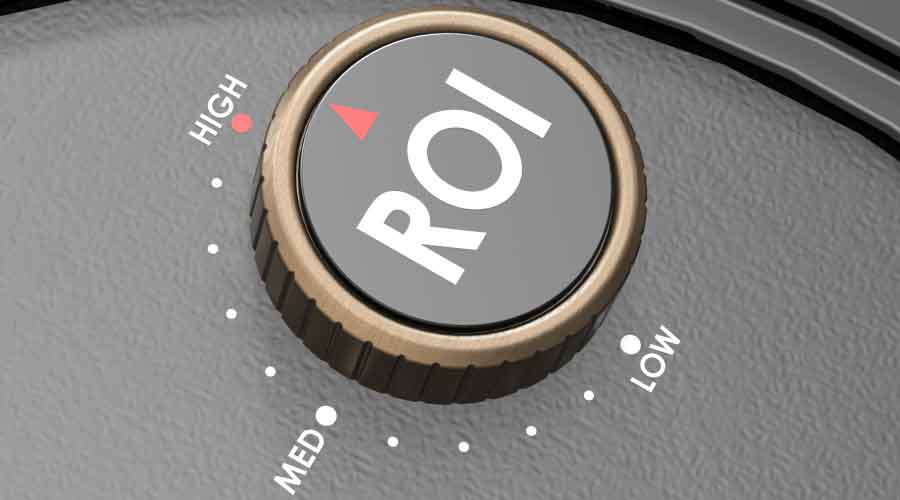ROI: Making the Case for Investments in Maintenance
Managers cannot make business decisions based on emotion. They must make them based on the validity of a business case and the return on investment.
By Andrew Gager, contributing writer
“It was the best of times, it was the worst of times, it was the age of wisdom, it was the age of foolishness.” So Charles Dickens wrote almost 165 years ago. The same could easily apply to the situation today.
The past two years have been difficult. The COVID-19 pandemic forced organizations to rethink business and operations and find ways to adapt to the changing environment. One could argue it was the worst of times and the age of foolishness, but signs indicate that the world is returning to some form of normal, the new normal. Could this be a sign of the best of times and age of wisdom?
Maintenance and engineering managers continue trying to do more with less but still are expected to meet their organizations’ goals, objectives and expectations. How do managers achieve more with less? The answer is to build a compelling business case for planned purchases and projects. If done properly, this process can help managers create a path from the worst of times to the best of times.
When I was a plant manager, my maintenance manager told me we needed to hire two technicians. I denied his request. Why? Because he came to me with an emotional request. As leaders of organizations, managers cannot make business decisions based on emotion. They must make important decisions based on the validity of a business case and the return on investment (ROI).
I want to focus on two areas. The first is the business case and ROI for human resources. The second is the business case and ROI for tangible and nontangible assets.
Staffing considerations
Let’s start with the business case for adding headcount. This move only makes sense if it increases the value to the organization and offsets the additional financial burden. The average maintenance technician spends 18 percent of the workday looking for parts and tools and 24-25 percent walking to and from the job site.
All this non-value activity results in the average technician’s utilization of 17-24 percent. How can managers improve that utilization number and make a business case to show the ROI?
One important reason for this low productivity is the lack of maintenance planning and scheduling. Managers have options in this scenario. One is to promote from within. The argument for promoting from within and moving a seasoned technician to the planner role is that the move takes a skilled person off the tools. While it is a valid point, history shows that the utilization improvement of the other technicians far outweighs the loss.
Instead of each technician planning their own work, have one of the best workers develop quality job plans so the other technicians can accomplish their tasks to the same level of quality. Creating a combined weekly schedule of preventive and corrective activities keeps the staff fully engaged and improves utilization.
For example, a manager has a staff of 20 technicians with an average hourly rate of $50 fully burdened and a utilization rate of 25 percent. The staff averages 800 hours of maintenance activity a week. If they operate at 25 percent utilization, that means they are working only 200 hours of the required 800 hours. Studies have shown that using a planner to develop quality job plans and an executable schedule can increase the utilization by about 50 percent.
Promoting one of the 20 technicians to the planner’s role will improve utilization from 25 percent to 37.5 percent. It also will add 100 hours to the work week, or 5,200 hours over the year, thereby improving utilization by $260,000.
That is the business case. The ROI is the utilization improvement. Also, the department did not hire anyone, avoiding payroll increases.
The move still leaves the department short of the required 800 hours, but the manager can look at other strategies to improve, such as optimizing preventive maintenance (PM), kitting and staging materials, implementing reliability centered maintenance, conducting failure modes and effects analysis, and using technology to improve the equipment.
Tangible and intangible assets
The definition of an asset is any item or entity that has potential or actual value to an organization and technology. It is critical for organizations to understand where their dollars are being spent.
For example, ultrasound, thermography, vibration analysis, motor circuit analysis technologies are all tangible assets. Computerized maintenance management systems (CMMS), HVAC fault detection and diagnostics (FDD), and process and utilization improvements are considered intangible assets. Managers tend to struggle with identifying, calculating and expressing cost avoidance and reductions to top management.
Let’s start with tangible assets. To calculate ROI with the highest degree of accuracy, managers should consider total returns and total costs. For an apples-to-apples comparison between competing investments, managers should consider annualized ROI. When calculating costs, make sure to calculate life-cycle costs, which include all costs associated with design, procurement, storage, installation, start-up, operation, maintenance, decommissioning and removal.
Consider thermography technology. Since heat is often an early symptom of equipment damage or malfunction, monitoring asset temperature levels should be a primary part of any PM program. Infrared technology simplifies the task of quickly spotting unusual conditions that require further evaluation. Technicians can use thermography to identify hot spots in electronic equipment, locating overloaded circuit breakers in power panels, and identifying roof leaks.
For example, a manager convinced top management to buy two 500 MHz four-channel infrared (IR) scope meters at a cost of $15,000. The organization operates a facility with a 360,000-square-foot roof area. The roof is over 22 years old and experiencing several leaks. Cost estimates to replace the roof were up to $3 million.
An initial IR inspection identified 1,208 square feet of roof requiring replacement at a total cost of $20,705. The following year, another IR inspection found 1,399 square feet of roof requiring replacement at a cost of $18,217.
The department started a roof IR inspection program and surveyed the roof each year. The survey resulted in identifying less than 200 square feet of roof needing replacement in any one of the following four years. As a result, the total cost for roof repair and upkeep for the six years was less than $60,000.
If the facility had been privately owned, interest on the initial $3 million roof replacement cost at 5 percent would have been $150,000 for the first year alone. Discounting interest on $3 million over the five-year period, simple cost avoidance resulting from IR survey and repair versus initial replacement cost — $3 million to $60,000 — amounts to $2,940,000. This figure does not consider interest on the $3 million, which would result in cost avoidance of $500,000-800,000, depending on loan interest paid.
Intangible returns also can prove advantageous. Whether a manager is thinking about installing new applications or wants to purchase or upgrade a CMMS, calculating the ROI can help make a more informed decision, which can provide immediate and long-term benefits.
Investing in technology can increase employee productivity and utilization and automate processes, as well as minimize early equipment failures. But without proper training and understanding, all technology will do is speed up technicians’ mistakes. Again, managers need to build the business case, including the ROI.
Managers need to consider a range of issues when looking to add technology to the organization, including: acquisition costs and implementation; the application’s impact on the facility, training costs, re-engineering processes, short- and long-term goals and objectives, and the impact on the culture of the organization.
Managers can use two popular ROI calculations. The first is net present value, which is the return a project will make at a specified discount rate. Ideally, this return should be a high or positive value. The second is internal rate of return, which is the yearly return percentage of the investment.
Consider the example of a large campus that was spending excessively on energy heating and cooling costs. The manager made a business case to invest in HVAC FDD. As a first step, faults were identified within several large air-handling units. A fault can degrade the system’s efficiency by roughly 20 percent, causing the unit to run longer to meet space cooling load demands.
The manager base-lined the current monthly average costs for a comparison of before and after the implementation of FDD. The initial monthly estimate for cost reductions was around $18,000. After installation of the HVAC FDD system, it was discovered there was an imbalance in the airflow.
By correcting the operation of the circulation pump in an air-handler heat recovery loop, the actual cost avoidance was an average of $20,160 per month, a 12 percent reduction. That was an annual cost avoidance of $241,920. The industry average in energy cost reductions was 8-15 percent. Initial HVAC FDD systems ranges from $500-$1,000 per unit.
Whatever a manager calculates as the financial return, reduction or avoidance, they must have someone in finance review the calculations to validate the numbers because the first department top management will ask to confirm the numbers is finance. If finance says they already ran the numbers and agree, the manager might have won the battle and the war.
Managers who use wisdom and understanding to identify facility improvements for tangible or intangible assets, build a business case, and demonstrate the financial ROI to top management can make these the best of times.
Andrew Gager is CEO of AMG International Consulting. He is a professional consultant and facilitator with more than 20 years of partnering with organizations in achieving strategic objectives and goals.
Related Topics:












